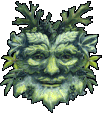Grow Light Guide
The Cost to Run a Lighting System
How the Sunlight Effects Plant Growth
Marijuana grow light systems allow you to extend the growing season by providing your plants with an indoor equivalent to sunlight. This is a great advantage for those of you who appreciate having a year-round supply of fresh flowers, veggies and herbs. Artificial lighting is also a great way to jump-start spring by starting your seedlings months ahead of the last frost. There are three main types of horticultural lighting systems.
HID (High Intensity Discharge) Lighting
HID lighting is the most efficient way to convert electricity into light that is available to the consumer. There are two types of HID grow lights used for horticultural lighting:
HID Light Efficiency

One 1000 watt HPS bulb puts out as much light as 111 incandescent 100 watt bulbs. One 400 watt MH bulb puts out as much light as 20 fluorescent 40 watt tubes
Metal Halide – MH
Metal halide bulbs produce an abundance of light in the blue spectrum. This color of light promotes plant growth and is excellent for green leafy growth and keeping plants compact. It is the best type of light to be used as a primary light source (if no or little natural sunlight is available). The average lifespan is about 10,000 cumulative hours. The bulb will light up beyond this time but due to the gradual decline of light, it is not worth your while to wait for the bulb to finally burn out. If you compare their lumen (brightness) per unit of energy consumed, metal halides produce up to 125 lumens per watt compared to 39 lumens per watt with fluorescent lights and 18 lumens per watt for standard incandescent bulbs.
High Pressure Sodium – HPS
High pressure sodium bulbs emit an orange-red glow. This band of light triggers hormones in plants to increase flowering/budding in plants. They are the best lights available for secondary or supplemental lighting (used in conjunction with natural sunlight). This is ideal for greenhouse growing applications.
Not only is this a great flowering light, it has two features that make it a more economical choice. Their average lifespan is twice that of metal halides, but after 18,000 hours of use, they will start to draw more electricity than their rated watts while gradually producing less light. HPS bulbs are very efficient. They produce up to 140 lumens per watt. Their disadvantage is they are deficient in the blue spectrum. If a gardener were to start a young plant under a HPS bulb, she/he would see impressive vertical growth. In fact, probably too impressive. Most plants would grow up thin and lanky and in no time you will have to prune your plant back before it grows into the light fixture. The exception to this is using a HPS light in a greenhouse. Sunlight is high in the blue spectrum which would offset any stretching caused by HPS bulbs.
| HID Light Output | Primary Growing Area | Supplemental Growing Area |
| 100 watts | 2′ x 2′ | 3′ x 3′ |
| 250 watts | 3′ x 3′ | 4′ x 4′ |
| 400 watts | 4′ x 4′ | 6′ x 6′ |
| 600 watts | 6′ x 6′ | 8′ x 8′ |
| 1000 watts | 8′ x 8′ | 12′ x 12′ |
HID Lighting Helpful Tips
Hanging height: Due to the heat that is emitted from these types of fixtures, you should hang them according to size. Smaller wattage systems (100 and 250) should be hung about 2 to 3 feet from the top of the plants. Medium wattage systems (400 and 600) should be hung around 4 feet from the top of the plants. High wattage systems (1000 and up) should be placed at least 4 to 6 feet from the plant tops.
How long should lights run? This depends on the type of plant. Most plants and vegetables need about 10 to 12 hours of light to promote growth. Plants that produce fruits or flowers will show improvement with up to 16 hours a day of supplemental light.
Fluorescent Lighting
This type of light is perfect for starts and seedlings. They are also popular for growing low-light plants like herbs and African violets. Fluorescent lights are low intensity and need to be placed within 8″ (up to 15″ for shade loving plants) of the plants to be effective. They are a poor light source for flowering and budding primarily because of their low lumen output.
Incandescent Lighting
These lights are also good for starts and seedlings and provide an inexpensive alternative to HID lights, because they do not require a ballast. These lights are only good for individual plants or small groups of plants because of their low lumen output and limited range.
The Cost to Run a Lighting System
To get the operating cost per hour for a light, take the lights combined wattage, and divide it by 1000 to get the kilowatts used. Then multiply that number by the amount your electric company charges per kilowatt hour. HID lights will use the number of watts it emits per hour, ie; 600w system will use 600 watts per hour (regardless of spectrum).
(light wattage output / 1000) x electricity cost per kilowatt hour = Operating cost per hour
operating cost per hour x hours used per month = Operating cost per month
How the Sunlight Effects Plant Growth
200 – 280 nm UVC ultraviolet range which is extremely harmful to plants because it is highly toxic.
280 – 315 nm Includes harmful UVB ultraviolet light which causes plants colors to fade.
315 – 380 nm Range of UVA ultraviolet light which is neither harmful nor beneficial to plant growth.
380 – 400 nm Start of visible light spectrum. Process of chlorophyll absorption begins. UV protected plastics ideally block out any light below this range.
400 – 520 nm This range includes violet, blue, and green bands. Peak absorption by chlorophyll occurs, and a strong influence on photosynthesis. (promotes vegetative growth)
520 – 610 nm This range includes the green, yellow, and orange bands and has less absorption by pigments.
610 – 720 nm This is the red band. Large amount of absorption by chlorophyll occurs, and most significant influence on photosynthesis. (promotes flowering and budding)
720 – 1000 nm There is little absorption by chlorophyll here. Flowering and germination is influenced. At the high end of the band is infrared, which is heat.
1000+ nm

